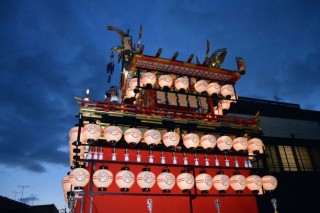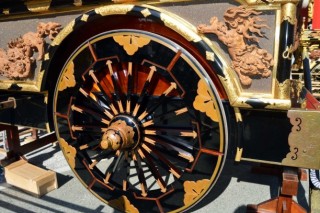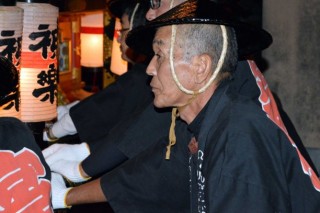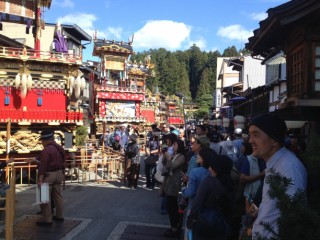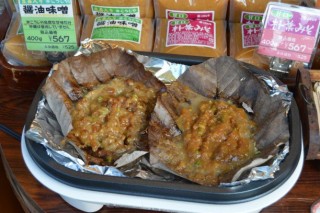Loading
Search
▼ Takayama And the Northern Alps
- Category:Tourism
It makes sense that Takayama is sister city to Cusco, the culturally rich and picturesque Peruvian city with an Incan heritage that is set in the Andes. It is also sister cities with Lijiang, a city in Southwestern China known for its traditional architecture and spectacular views of nearby mountains. Takayama has all these qualities: a lovely setting in the foothills of the northern Japanese Alps, an intensely atmospheric historic district that makes you feel as if you are transported back into the old Japan, and a rich cultural heritage.
That heritage is highlighted each spring and fall in festivals the city hosts. The festivals honor the Shinto god who resides at the base of the mountain that rises behind the city. The god is carried from its shrine around the city, approving and blessing the activities of the people. The mood of the festivals is joyous–a happy communion between the people of Takayama and the place they live.
The festival highlights elaborate “floats” that are not floats at all but towering carriages that showcase Takayama’s ancient traditions of superb craftsmanship in metal and wood. Men in traditional costume haul the twelve floats, each representing one of Takayama’s traditional neighborhoods, through the narrow streets of the old city.
The festival highlights elaborate “floats” that are not floats at all but towering carriages that showcase Takayama’s ancient traditions of superb craftsmanship in metal and wood. Men in traditional costume haul the twelve floats, each representing one of Takayama’s traditional neighborhoods, through the narrow streets of the old city.
Takayama’s wonderful cuisine is on display in stands and small shops: grilled rice dumpling glazed in soy; miso cooked on magnolia leaf; and, of course, sumptuous Hida beef, which is grilled on skewers or served in luscious lightly cooked slabs as sushi.
The city has seven sake breweries that host tastings and sell their wares. It’s delightful to stroll through the remarkable architecture of the old town, absorbing the celebratory atmosphere of the festival, eating small snacks when the urge arises, and sampling sake. The old city has lovely coffee shops where you can to sit and watch people and recharge for more festival action.
Beyond the city, the jagged ridgelines of the Northern Japanese Alps rise into the sky, topping ten thousand feet. The Northern Alps are rich in onsen (hot springs), and there are numerous reasonably priced ryokan in the Okuhida-Onsengo onsen area that has their own private bathing pools and offer breakfast and dinner as part of their rate. I stayed in Matsunoi-ryokan, with a lovely outdoor onsen. I dined on a delicious sukiyaki served on my room, followed by a traditional shiatsu massage.
Beyond the city, the jagged ridgelines of the Northern Japanese Alps rise into the sky, topping ten thousand feet. The Northern Alps are rich in onsen (hot springs), and there are numerous reasonably priced ryokan in the Okuhida-Onsengo onsen area that has their own private bathing pools and offer breakfast and dinner as part of their rate. I stayed in Matsunoi-ryokan, with a lovely outdoor onsen. I dined on a delicious sukiyaki served on my room, followed by a traditional shiatsu massage.
The seven-minute Shinhotaka Rope Way sky tram took me up to a panoramic viewing platform. Far below, a sparkling river tumbled through the valley’s cleft. The steep–sided mountains were resplendent with fall foliage. The mountains stretched on and on—a huge area, stretching into the distance. I could see why this region is known as the “enfolded land,” and why for so long it has retained a remote secluded character, its feeling of authenticity and integrity–a place that time forgot.
By Kenneth Wapner
By Kenneth Wapner
- February 27, 2016
- Comment (0)
- Trackback(0)


